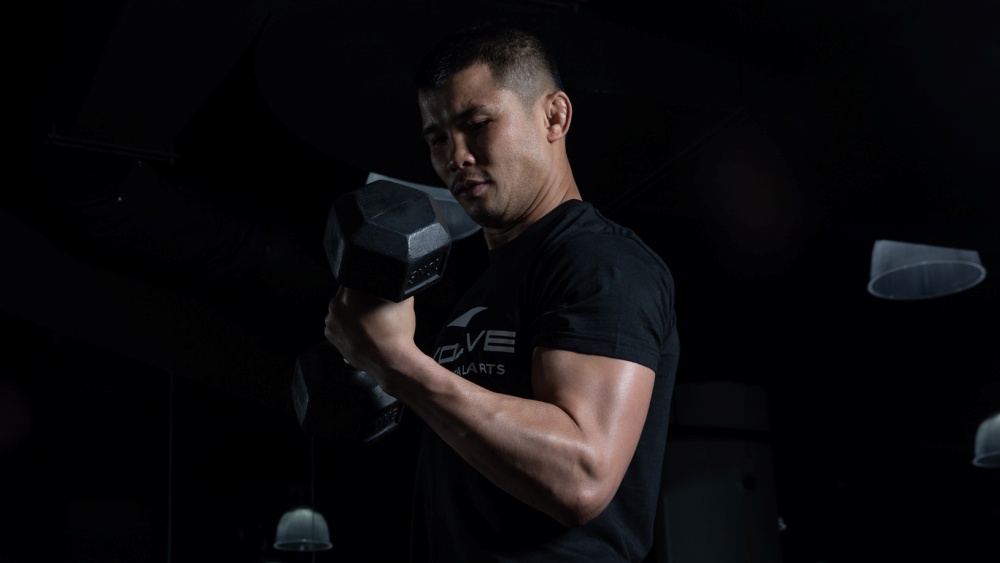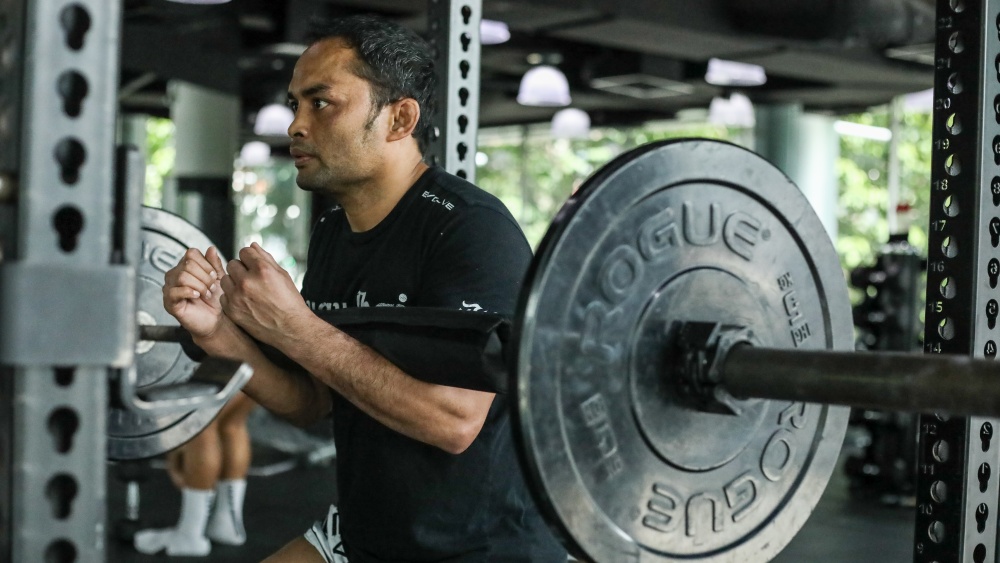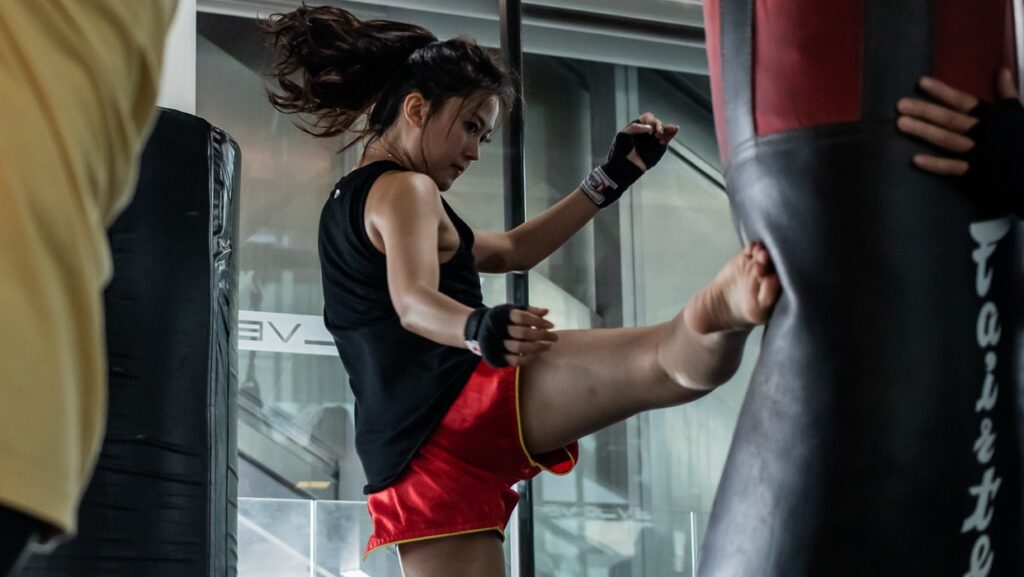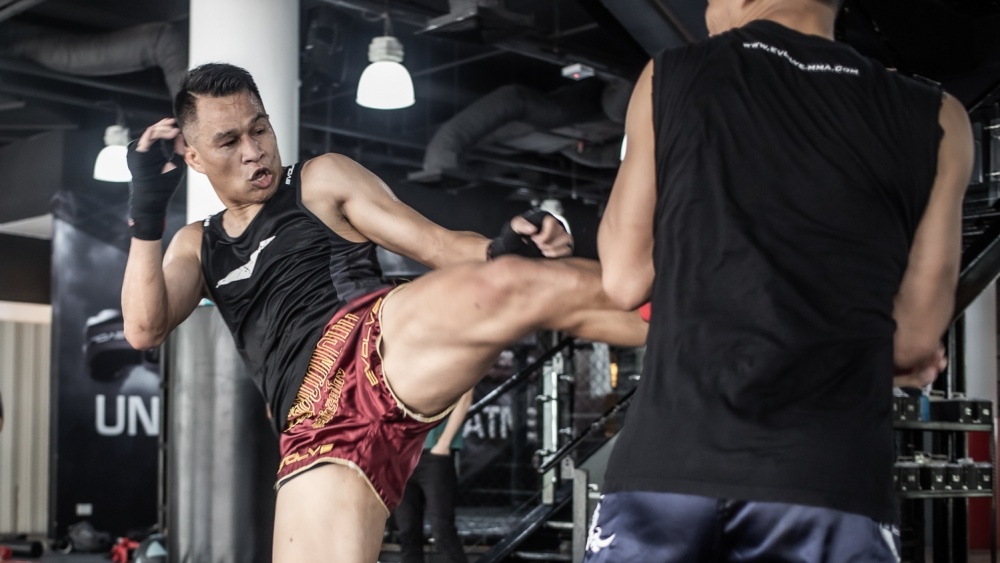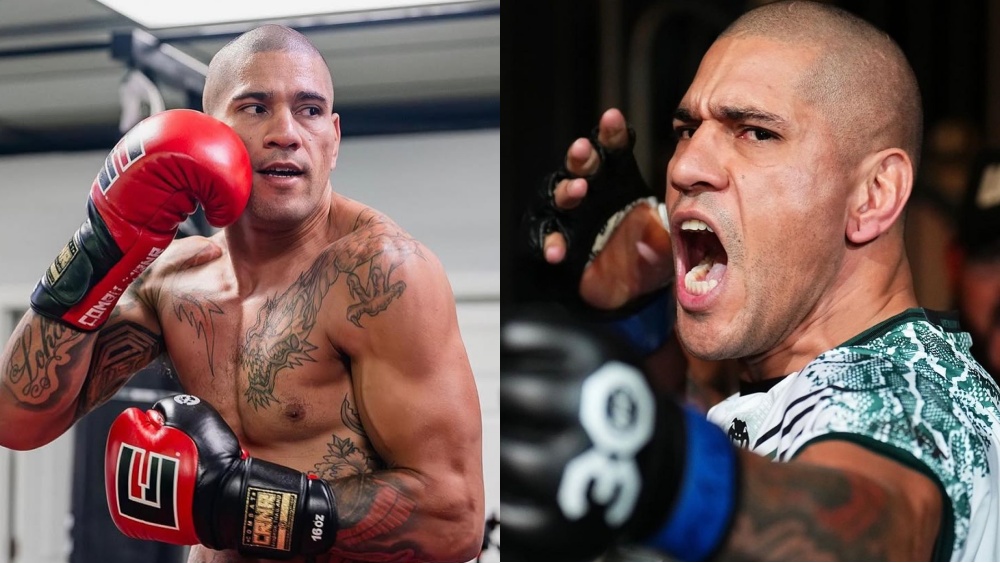There are many misconceptions about the potential benefits and drawbacks of weightlifting among traditional martial artists. One of the most common ones is the idea that lifting weights makes fighters slow. In reality, weightlifting slows down a fighter only when done incorrectly. Properly lifting weights increases your speed instead of decreasing it.
Weightlifting hasn’t historically been a significant part of traditional Muay Thai training, but it’s becoming increasingly popular as modern sports science gives us a better understanding of how weight training improves athletic performance. Historically, the bulk of traditional Muay Thai resistance training has been calisthenics and road work.
Benefits Of Weightlifting For Muay Thai Fighters
Your primary focus should always be training and improving your technique as a Muay Thai fighter since that gives you the biggest advantage inside the ring. There’s no point spending all those hours in the gym improving your strength and conditioning if you don’t even have the technical proficiency needed to use your strength correctly.
However, you shouldn’t make the mistake of thinking you can develop all the physical attributes needed to compete at the highest level, like cardiovascular fitness, speed, and strength, by simply training in Muay Thai.
Yes, training in Muay Thai will lead to improvements in all these areas since it gives you a full-body workout, but it most likely won’t be enough to compete at the highest levels. Factors like cardio, strength, speed, reflexes, flexibility and mobility often come into play when two equally skilled Muay Thai fighters clash inside the ring.
Strictly training in Muay Thai will leave your striking power significantly underdeveloped, and your speed will also be limited since it’s dependent on your strength and power. Some of the benefits of adding strength training to your Muay Thai training routine include:
- It allows you to reach your maximum power and strength training potential, leading to faster, more powerful strikes. Maximizing your strength and power also increases your likelihood of being able to overpower opponents.
- Improves your ability to perform at a high level when fatigued.
- It fixes strength imbalances and improves your posture, improving your balance and movement inside the ring.
- It improves your overall endurance and cardiovascular health.
- It accelerates skill development.
Think of your body as a vehicle signed up for a race when it comes to weightlifting for Muay Thai. Your training improves the driver’s skills, while weightlifting gives the car modifications that allow it to go faster, handle turns betters, improve fuel efficiency, increase the horsepower in the engine, or improve its fuel capacity. This analogy should make it crystal clear to you how vital weightlifting can be for Muay Thai fighters.
The most skilled race driver in the world might still lose to a less skilled driver driving a car with all sorts of performance mods. It’s the same way super athletic fighters can sometimes overpower more skilled but physically weaker fighters.
For example, Samart Payakaroon is arguably the best Muay Thai fighter to ever live, but at 59, his technical proficiency wouldn’t be enough to get him past a champion in his 20s. The skills are there, but his vehicle has serious limitations at this point in his life.
Weightlifting should be part of your Muay Thai training if you plan to be competitive in the sport. You want to be a skilled driver, but you also want your car to have as many mods as possible. These mods will come in handy when you face similar or more skilled opponents.
Weightlifting and other strength and conditioning activities are long-term investments that bring many rewards. Unlike a race car, your body can’t be enhanced overnight with some last-minute engine work. You’ll need to consistently push your body for years to get your body to perform close to its optimal abilities.
Make this investment early on if you plan to reach your highest potential as a Muay Thai fighter, regardless of whether or not you plan to compete. The rewards of weightlifting will benefit all aspects of your life, not just your Muay Thai training. It will accelerate your growth as a Muay Thai fighter.
How Weightlifting Accelerates Your Growth In Muay Thai
The benefits of weightlifting for Muay Thai go past building bigger, more explosive, more balanced muscles. Muay Thai and weightlifting both require using skilled movement patterns. Many weightlifting movements transfer to Muay Thai movements. For example, the teep uses a similar movement pattern to the leg press exercise.
Lifting weights regularly teaches your body to perform coordinated movements that require using multiple muscle groups. Make sure you perform each exercise with perfect form to teach your body to stay disciplined when fatigue kicks in. For example, if your knees cave in during squats when you’re tired, your knees will probably cave inward in your fighting stance when you’re tired.
When done correctly, weightlifting exposes movement errors and gives you a chance to correct them. Good movement inside the ring is about mastering the constraints and principles of your body. Lifting weights will teach you a lot about how your body works, especially when you perform exercises with proper form.
Building Your Weightlifting Program For Muay Thai
Aim to lift two to three times per week as a Muay Thai fighter. If you’re new to both, train only Muay Thai for a few weeks to give your body a chance to adjust to your training routine, then add weight training to it.
You only need to hit each muscle group once weekly to build muscle strength, improve muscle endurance, and increase your explosive power.
Stay away from bodybuilding workouts when lifting weights for Muay Thai. These workout programs are typically centered around high rep volume for optimal muscle growth and strength. That can lead to overtraining since Muay Thai training is also based on high-volume reps.
When lifting weights, Muay Thai fighters should focus on power, strength, and explosiveness. This involves performing exercises in the four to twelve rep range. Lifting heavier weights for lower reps focuses on power and explosiveness, while higher reps focus on strength and muscle endurance.
Muay Thai techniques rely more on explosive and reactive strength, so build your weightlifting program around heavy weights and low rep volumes. Your strength and conditioning program should be a complement to your Muay Thai training, not something that takes away from it. Save most of your energy for your Muay Thai training.
The exercises you focus on during your weightlifting sessions should target your reactive and explosive strength. For example, plyometric exercises like pogo jumps help to build the reactive strength needed for techniques like switch kicks and double knees, which require lots of reactive strength to execute.
Explosive strength is your ability to produce force at fast speeds. You can train this attribute by performing Olympic lifts, medicine ball throws, and box jumps. You can also improve your explosive strength by explosively performing your gym reps. Instead of slowly pushing through your reps (which is excellent for muscle growth), explode through each rep to improve your ability to go from eccentric to concentric muscle actions quickly.
Improving your explosive power doesn’t just make your techniques more powerful and faster; it also helps to conserve energy. Lifting weights also increases your physical load tolerance, allowing you to train in Muay Thai harder and for longer periods. As a result, you pick up new Muay Thai skills faster.
Exercises To Add To Your Weightlifting Program
Now that we’ve gone over the benefits of weightlifting and how to incorporate it into your Muay Thai training, let’s go over some exercises that will translate into improved performance inside the Muay Thai ring.
1) Deadlifts
Deadlifts are one of the many exercises that translate into improved performance as a Muay Thai fighter since it engages most muscles in the body like your calves, hamstrings, traps, glutes, and abs. It strengthens your core and increases muscle strength all over your body.
Proper form is required when performing deadlifts since it puts lots of strain on your lower back when done incorrectly. Master the correct form of deadlifts before trying to perform your reps explosively.
2) Squats
Squats are another popular exercise with Muay Thai fighters. It’s one of the best exercises for your lower body as it targets most of the muscles in your legs. Improving explosive and reactive strength in your lower body gives you more power to transfer into your kicks, elbows, knees, and punches.
There are many ways to go about squatting, so experiment with different versions to target your lower leg muscles in different ways.
3) Lunges
Lunges also target your leg muscles, but it involves performing each rep with only one leg, so it also improves your balance, which translates well for Muay Thai. Keep your feet a little more than shoulder-width apart when performing lunges while keeping your back straight. Hold dumbbells or kettlebells in your hands to make the exercise more challenging.
Unilateral exercises like lunges force both sides of your body to perform equal work, helping to address muscle imbalances. As a result, your weak side becomes more comparable to your strong side inside the ring.
4) Bench Press
Exercises that involve pushing weights away from your chest increase the speed and power of your punches. These exercises engage muscles in your chest, shoulder, and triceps while increasing stability in your entire body.
Push-ups are an excellent substitute for bench pressing if you don’t have access to benching equipment. However, the benefits you get from the exercise will be limited if you can get more than eight reps with each since that puts you outside the sweet spot for power and explosiveness. You can perform different variations like one-handed push-ups to keep you in the sweet spot and make the exercise more challenging.
5) Overhead Press
The overhead press targets muscles in your shoulders, like your anterior deltoids and triceps. It also works your obliques, spinal stabilizers, transverse abdominal muscles, and your lower back since performing the exercise with free weights requires you to balance the weight as you raise it over your head.
The overhead press can be performed with machines, barbells, and dumbbells. Dumbbells typically give you the most benefits since each half of your body is forced to work independently. Perform shoulder presses explosively so your gains carry over into the Muay Thai ring.
6) Pull-Ups
Pull-ups are one of the most effective exercises for muscles in your posterior chain, like your rear deltoids, lats, and upper back muscles. It also works muscles in your arms, like your biceps and forearms. Pull-ups are a more challenging bodyweight exercise since they require you to pull your entire body weight with only your arms and back muscles. The exercise becomes even more challenging when you perform your reps explosively.
If you can already do more than eight reps of pull-ups at a go, attach weights to a weight belt to increase the difficulty of the exercise.
7) Rows
Exercises that involve a rowing motion like barbell or dumbbell rows also target muscles in your posterior chain like your lats and upper back. These exercises are the next best thing for muscles in your back next to pull-ups.
You won’t have to row your entire body weight when performing this exercise, making it a lot easier to find the ideal weight you can only perform four to eight reps. Ensure your routine also contain dumbbell rows since that forces each half of your body to work independently.
8) Power Clean/Conventional Cleans
This Olympic lift targets muscles all over your body, like your glutes, quads, hamstrings, calves, lats, and traps. The main difference between a power clean and a conventional clean is where you catch the weight. Conventional cleans involve catching the barbell while your thighs are below parallel to the squat (you’re in a deep squat position), while power cleans involve catching the weight when your thighs are above parallel. Both exercises are great ways to increase explosive power in your entire body.
You may also like:
Here’s How You Can Develop Explosiveness And Power For Muay Thai
